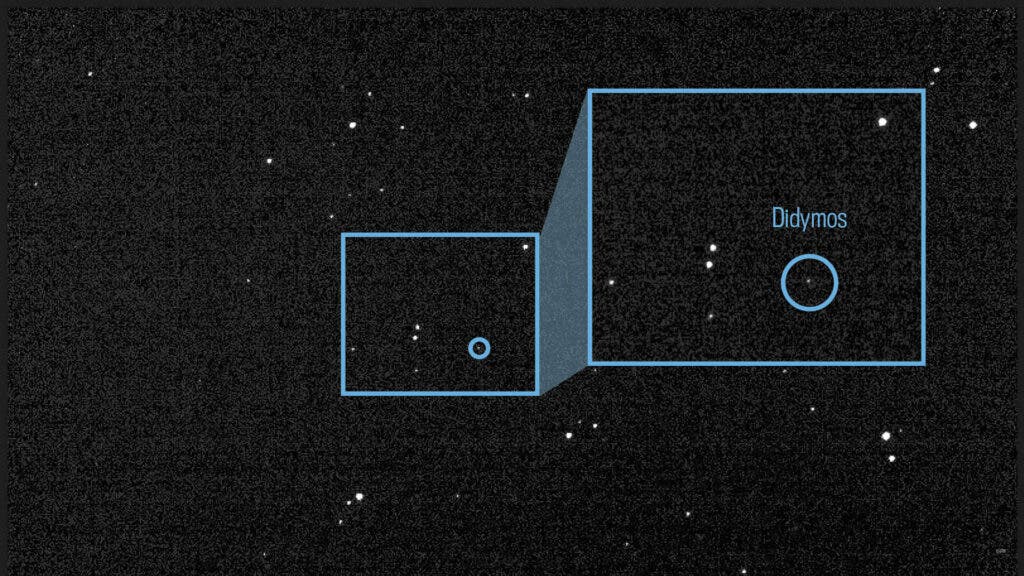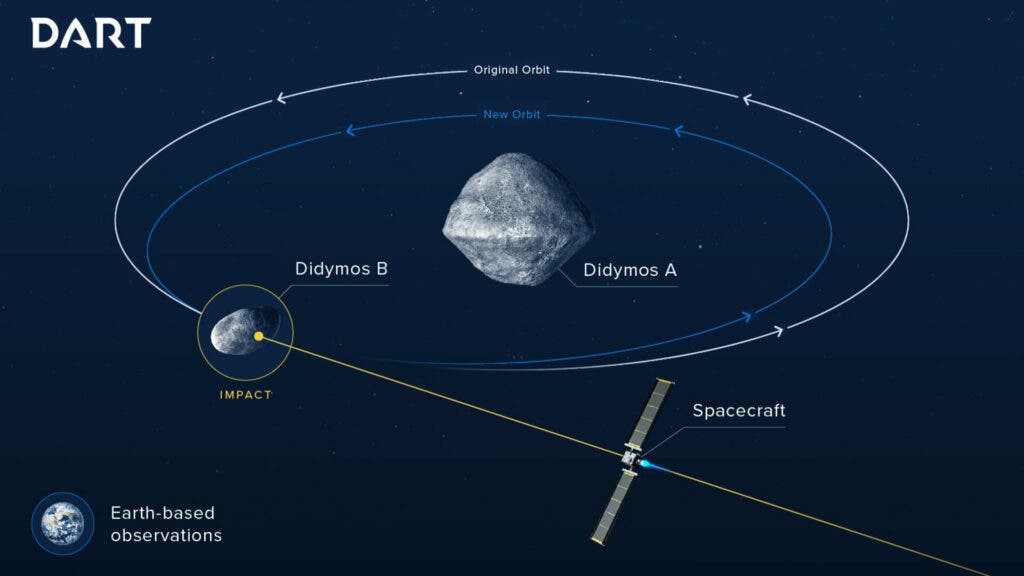Dimorphos, the asteroid moonlet of Didymos, is innocent. It’s got no deal whatsoever with the Earth. In fact, it’s not even close to being on a trajectory with our planet. But unfortunately for the moonlet, it was chosen by NASA as the test site for its first-ever planetary defense system.

NASA’s Double Asteroid Redirection Test (DART) spacecraft recently got its first look at Didymos, the double-asteroid system that includes its target, Dimorphos. On Sept. 26, DART will intentionally crash into this target, the asteroid moonlet of Didymos. While the asteroid poses no threat to Earth, this is the world’s first test of the kinetic impact technique, using a spacecraft to deflect an asteroid for planetary defense.
Now, DART is well on its way to Dimorphos; in fact, it’s got it in its sight. It’s still some 20 million miles away, but it’s close enough to get a decent view of it — one comparable to what we can see with our earthly telescopes.
“This first set of images is being used as a test to prove our imaging techniques,” said Elena Adams, the DART mission systems engineer at the Johns Hopkins Applied Physics Laboratory (APL) in Laurel, Maryland. “The quality of the image is similar to what we could obtain from ground-based telescopes, but it is important to show that DRACO [a camera that support’s DART’s target aquisition] is working properly and can see its target to make any adjustments needed before we begin using the images to guide the spacecraft into the asteroid autonomously.”
DART is now making measurements every five hours, and as it gets closer to the moonlet, it will perform three trajectory tweaks, each of which will make sure the ship is on the best trajectory to impact Dimorphos. Then, once it is 24 hours away from impact, the navigation team will estimate the position of the moonlet within 2 km — from there, DART will be on its own to autonomously guide itself to its collision with the asteroid moonlet.
This is NASA’s first planetary defense mission, and according to researchers, it’s high time we truly started developing a planetary defense system.

The chance of a celestial body like Dimorphos hitting us is low, but if it does hit, it can cause a lot of damage — which makes the overall risk considerable, says Mark Boslough, a physicist at Los Alamos National Laboratory. In an interview at the Starmus festival that wrapped up last week in Armenia, Boslough told ZME Science:
“The nature of this threat is different from most threats we face. A potential impact is a fairly low probability impact, it’s unlikely, but if it does happen, it could be catastrophic.” Risk depends on both probability and consequence, and this means the risk is significant.
DART is like an impact experiment, Boslough says, fundamentally similar to the experiments some physicists do in grad school, using cannons and projectiles like bullets and hitting rocks and making craters. But this experiment happens on a much bigger scale.
“What we would be able to do is measure the amount of momentum transferred from the projectile that’s hitting this moon and it will change its trajectory. That will give us information about coupling — how you couple energy and momentum and transfer momentum to an asteroid,” Boslough adds.
DART is expected to crash into the moonlet in about two weeks. When it does, we’ll know a bit more about how to deflect an asteroid — but it’s just the first step. To be truly protected from potential hits, we need to do much more.
“This will give us one data point, we won’t know how much we can generalize that so we’ll need to do more experiments and more modeling to really have confidence that we can sufficiently deflect and make it miss the Earth. So this is I think (I hope) the first of many more experiments,” Boslough remarks.
NASA will livestream the crash event on 26 September at 22:30 UTC.






